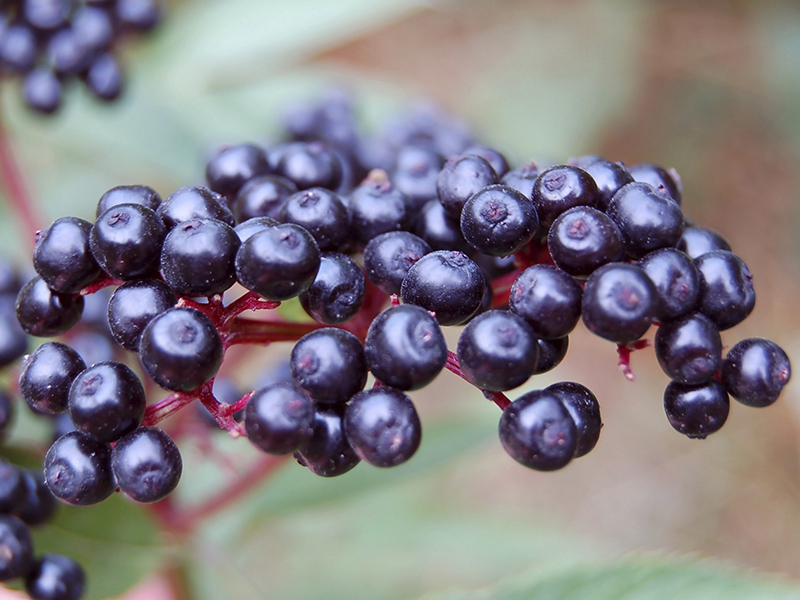Find plants
My list (0)
Blue Elderberry, Mexican Elderberry, Blue Elder
Sambucus nigra cerulea
Qualifies for Tree Enhancement Program
Climate ResiliencySouthwestern native. Rounded to irregular habit. Large shrub or small tree. Medium green leaves divided into 5 to 9 leaflets. Oval to oblong, leathery leaflets with pointed tips and toothed margins. Flattened clusters of small creamy-white flowers. Attract bees, butterflies, and hummingbirds. Clusters of small blue-black berries. Fruit is a food source for birds. Fruit is edible, but should not be eaten raw. Often used in making jams, pies, and wine. (Note: Only blue or purple elderberries are edible. Varieties with red or white berries are toxic.) Prune for shape in late autumn. May lose foliage in summer in drought or extreme heat situations. Prefers amended soils, but is adaptable to various soil conditions. Some litter from foliage and fruit drop. May spread by root suckers. Synonyms: Sambucus nigra caerulea, S. mexicana, S. cerulea, S. caerulea, S. glauca, S. neomexicana.
- Plant type: Tree
- Maintenance level: Medium
- Water requirement: High, Medium
- Sun exposure: Full, Part Sun, Morning Sun, Afternoon Sun
- Height range: 15 Feet
- Width range: 25 Feet
- Canopy value: 368 ft²
- Growth rate: Medium
- Seasonal habit: Evergreen, Deciduous, Semi-Evergreen
- Flower color: White
- Flower season: Spring, Summer, Winter
- Fruit color: Blue, Black
- Fruit season: Summer, Autumn
- General foliage color: Green
- Design style: Pollinator Plants
- Hardiness cold tolerance: 0 °F
- Soil preference: Loam, Rocky, Well Drained, Moist
- Native location: Western U. S., British Columbia, Northern Mexico
- PH preference: Not Particular
- Sunset zones: 2, 3, 4, 5, 6, 7, 8, 9, 10, 11, 12, 13, 14, 15, 16, 17, 18, 19, 20, 21, 22, 23, 24, H1
- USDA hardiness zone: 1a, 7a, 7b, 8a, 8b, 9a, 9b, 10a, 10b
New Search
